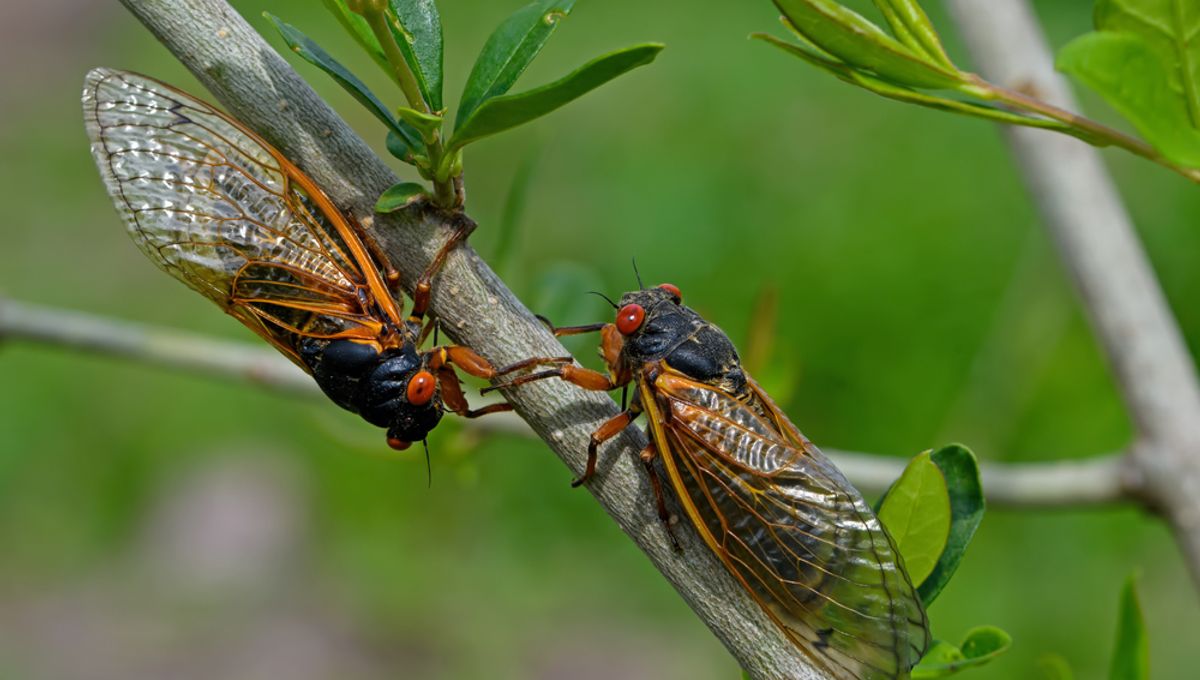
Periodical cicadas don’t emerge often – only once every 13 or 17 years, to be precise – but when they do they arrive in their millions, and even billions. It’s now accepted that this pattern of emergence helps them avoid falling in sync with any predators, but how do they know to emerge all at the same time? Well, that’s remained something of a mystery.
Brood cicada emergences are a phenomenon that’s been recorded by humans as far back as biblical times. Now, a group of researchers decided it was about damn time we take a closer look at what could be driving them.
We know that the cicadas emerge in spring, but living in the ground means that it’s not going to be the same temperature for every cicada waiting to go topside. Some patches of earth may be cooler than others, so if it was simply a matter of temperature, we would expect to see more patchy patterns of emergence.
Using a random-field Ising model (RFIM), the team was able to simulate the cicada experience, taking into account the microclimates they are exposed to in the soil. RFIM is a good model because it can show how the decisions of cicadas (represented by the spin of magnets) can be influenced not just by interactions with each other, but also by other external factors. So, in the same way that microclimates might influence cicada emergence decisions, the magnets’ spinning could be altered by random fields.
By mimicking the environmental conditions we see in real life in their model, they saw similar mass swarms of decision-making in their magnets, mimicking the swarms of cicadas that we experience in real life. These swarms even mimicked the duration and frequency of cicada brood emergence, lasting for several weeks and being broken up with small gaps between them.
The theoretical approach suggests that cicada nymphs are unlikely to be able to tell when environmental conditions have tipped the threshold of 18°C (65°F) it was thought was needed to motivate them to emerge. Instead, they appear to be relying on a swarm-mind approach to decision-making that’s similar to consensus-building communication networks with distinct properties.
This is exciting because it means they’ve established a good model for studying emergence behavior, but it doesn’t yet solve the mystery. The authors suggest that the next step involves going out in the field to test if communication by cicada nymphs underground really is the key. This means taking acoustical samples to see what the cicadas a saying while they’re lurking underground, if anything.
They also want to establish a better understanding of the spatial variation in microclimates and get a stronger idea of the dynamics of emerging swarms. Considering that 2024 is bringing something of a cicadapocalypse, it could make for a testing field work season.
For the first time in 221 years, two broods have lined up so in such a way that they’ll be emerging at the same time. Brood XIII and Brood XIX last did this in 1803, and it’s going to be one hell of a noisy reunion.
Fingers crossed the sexually-transmitted, brain-snatching fungus doesn’t catch wind of their orgy…
The study is published in the journal Physical Review E.
Source Link: Millions Of Cicadas Emerge Simultaneously Every 13 Or 17 Years, But How Do They Know When To?